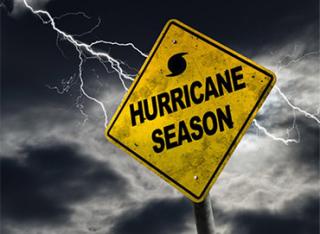We will help you figure out which steps you need to take to secure a prized possession, your boat!
Soon after Hurricanes Irma, Harvey and Maria devastated much of Florida, Texas and the Caribbean the 2017 hurricane season made headlines around the world. Damages totaled upwards of $200 billion, making it the costliest hurricane season in U.S. history. Boat owners were among the hardest hit. The Boat Owners Association of the United States (BoatUS) says over 63,000 recreational boats were damaged or destroyed by Irma and Harvey.
Many marinas are increasingly demanding that boat owners take part in a hurricane plan. So if you happen to store your boat in a marina, check to see if the facility administration does indeed have a hurricane plan. If your marina does have a hurricane plan, make sure you designate someone as your replacement if you are out of town or have a scheduling conflict and can’t participate in the storm preparations. An important point is the marina's hurricane plan, should not replace your own.
Securing Your Boat on Land
It is best to take your boat out of the water and move it to a secure location on land if at all possible. This location should be on ground high enough to avoid the storm surge. It should also offer some protection against wind. The ideal location would be your garage if the boat fits. Smaller boats are often lighter than cars and could be blown over by strong gusts.
If you have to leave your boat out in the open, be sure to fill up the bilge compartment with water to weigh it down, tie the boat down to the ground, and block the trailer's wheels to keep it from moving. It is recommended that you cut off the electrical system and remove all batteries to eliminate the risk of fire if you're taking your boat out of the water.
If you were to ask any expert, they would more than likely recommend never leaving your boat on davits lifts, or racks. Storm surges and heavy currents make the base of these structures unreliable. They are often not really secured and can cause damage to your boat if they collapse or drift under tropical storm-force or hurricane-force winds.
Securing Your Boat in the Water
If you have to leave your boat in of the water, that unfortunately increases the chances of it suffering damages. However, there are things you can do to reduce the risk of damage.
If you're leaving your boat in the marina, secure it to the slip using double or triple lines. Use chafe protectors wherever the lines rub up against the dock or the boat to keep the ropes from breaking mid-storm. Use enough rope to allow the boat to move with the storm surge. The type of rope you use also matters. According to the University of Florida, boats longer than 34 feet should use 3/4-inch lines at a minimum, if not 1-inch lines. Finally, make sure the dock pilings are strong enough to hold during the storm and tall enough to stay above the surge. Wooden pilings are more flexible than concrete pilings obviously making them sturdier.
If you're using a hurricane hole, don't wait until a hurricane advisory to look for a place. Secure a hole ahead of time and make sure you will be able to get to it easily and quickly before and after the storm. Tie the boat to the surrounding trees and use anchors to secure the vessel. Boat US recommends looking for hurricane holes with good holding, surrounding hills to block wind, and little wind funneling between those hills. Helix anchors are particularly recommended, as they resist more pull force than dead-weight anchors or mushroom anchors.
And finally, whether you secure your boat for a hurricane on land or in the water, remove everything that could conceivably be ripped off by a strong gust. Masts, sails, antennas, deck chairs, dinghies, removable fuel tanks, it all has to go. Remember, you're not just protecting your boat from damage, you're protecting the property around you.
During the Storm
More than half the deaths attributed to Hurricane Hugo in 1989 were boaters, all drowning while attempting to save their boats. "National Hurricane Center" Once tropical storm or hurricane winds hit, you should be completely done with all your boat preparations and in a safe shelter. It is imperative that you never ride out the storm inside your boat. .
According to the National Hurricane Center (NHC), about 25 percent of hurricane fatalities result from boaters trying to secure vessels in deteriorating storm conditions. Don't risk your life or the life of the rescuers that may need to help you get out.
Sailing During Hurricane Season
The Atlantic and Caribbean have some of the nicest summer weather in the world. However, the threat of hurricanes should not be underestimated. If you're boating between the months of June and November, make sure you keep an eye on the weather forecast. NOAA Weather Radio is a great resource that provides advisories for all 50 states and island territories in the Caribbean and the Pacific.
Carolyn Shearlock of The Boat Galley recommends knowing the location of the nearest hurricane hole or marina, as well as staying no more than a day's journey away from one. She also recommends being mindful that weather forecasts may not match up with reality and using common sense.
If you are caught in a hurricane while at sea, BoatSafe.com recommends putting on a life vest and staying below deck, which is safer than being above where the wind and rain could wash you overboard. Please, from all of us at L&H Boats, Inc. STAY SAFE during this time!.
